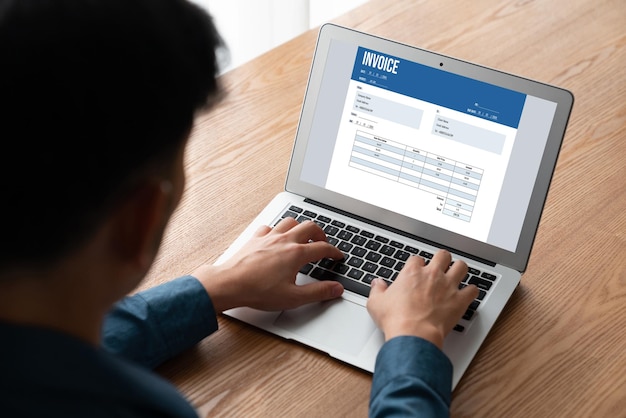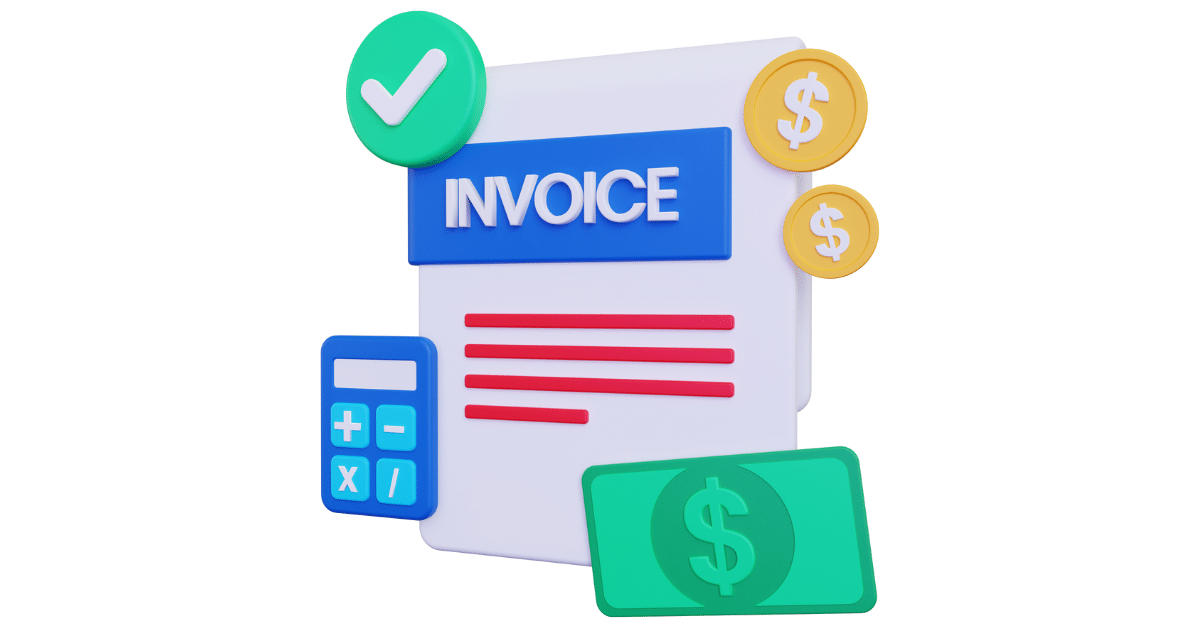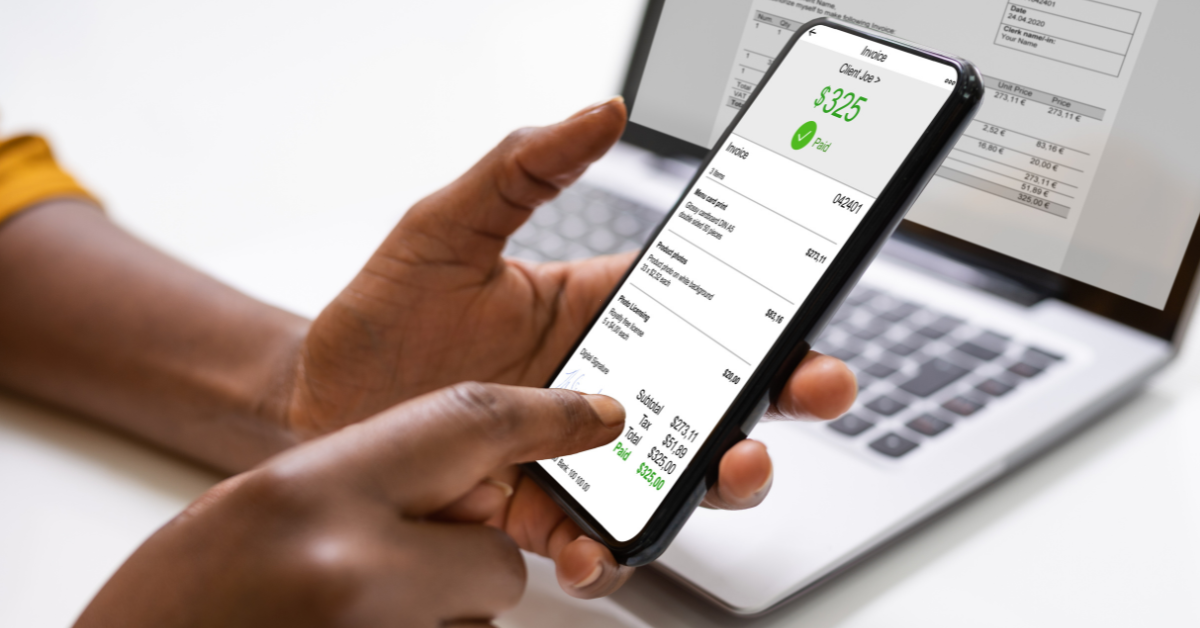In today’s fast-paced business world, small business owners and freelancers are constantly seeking efficient ways to manage their finances without breaking the bank. Free invoicing software is a game-changer, providing essential tools that allow entrepreneurs to focus on what they do best: growing their business.
From creating professional-looking invoice templates to tracking payments and managing client information, there are plenty of invoicing solutions available that cater specifically to the needs of small enterprises.
This post will guide you through the best free invoicing tools, offering insights on how to create an invoice and streamline your billing processes.
Whether you’re a seasoned professional or just starting out, these online invoicing options can help you stay organized and ensure you get paid on time.

Free invoicing software offers small businesses and freelancers powerful tools to manage their finances effectively. Let’s explore the benefits, key features, and common misconceptions surrounding these valuable resources.
Benefits of Free Invoicing Tools
Free invoicing tools provide numerous advantages for small business owners and freelancers. These solutions offer a cost-effective way to manage financial transactions and improve cash flow.
One of the primary benefits is the ability to create professional-looking invoices quickly. This helps businesses maintain a polished image and build credibility with clients.
Free invoicing software often includes features for tracking payments and sending reminders, which can significantly reduce late payments and improve overall cash flow management.
Many of these tools also offer basic reporting capabilities, allowing users to gain insights into their financial performance without the need for complex accounting software.
Key Features to Look For
When choosing free invoicing software, it’s important to consider several key features that can enhance your billing process and financial management.
Customizable invoice templates are essential for creating professional-looking documents that reflect your brand. Look for software that allows you to add your logo and customize colors and layouts.
Automated payment reminders can save time and reduce the awkwardness of chasing late payments. This feature helps maintain a steady cash flow without constant manual follow-ups.
Multi-currency support is crucial for businesses working with international clients. It allows you to create invoices in different currencies and simplifies financial tracking.
Reporting and analytics tools provide valuable insights into your business’s financial health. Look for software that offers basic reports on income, expenses, and outstanding payments.
Integration with other business tools, such as accounting software or payment gateways, can streamline your workflow and reduce manual data entry.
Common Misconceptions
There are several misconceptions about free invoicing software that may deter small business owners from using these valuable tools.
One common myth is that free software lacks essential features. In reality, many free invoicing tools offer robust functionality that meets the needs of most small businesses and freelancers.
Some people believe that free invoicing software is not secure. However, reputable providers prioritize data security and often use encryption to protect sensitive information.
Another misconception is that free tools are difficult to use. Many free invoicing solutions are designed with user-friendliness in mind, offering intuitive interfaces and helpful tutorials.
Some worry that using free software means limited customer support. While premium support may be reserved for paid plans, many free tools offer community forums, knowledge bases, and basic email support.
Best Free Invoicing Tools

Selecting the right invoicing software can significantly impact your business operations. Let’s explore some of the top options available for small businesses and freelancers.
Top Software for Small Businesses
Several free invoicing tools cater specifically to the needs of small businesses, offering a range of features to simplify financial management.
Wave is a popular choice, providing a comprehensive suite of accounting and invoicing tools. It allows users to create professional invoices, track expenses, and generate financial reports.
Zoho Invoice offers a free plan for businesses with up to five customers. It includes features like time tracking, expense management, and customizable templates.
Invoice Ninja is an open-source option that provides unlimited invoices and quotes for up to 100 clients. It also offers features like time tracking and payment integration.
These tools offer varying levels of functionality, so it’s important to assess your specific needs when choosing the best option for your business.
Best Solutions for Freelancers
Freelancers often have unique invoicing requirements, and several free tools cater specifically to their needs.
AND.CO from Fiverr is a comprehensive tool that offers invoicing, time tracking, and contract management. It’s particularly useful for freelancers who need to manage multiple projects and clients.
PayPal’s invoicing feature is another popular choice among freelancers. It’s free to use and integrates seamlessly with PayPal’s payment processing system.
Invoicely offers a free plan that includes unlimited invoices and clients, making it an excellent option for freelancers with a growing client base.
These tools often include features like project management and time tracking, which can be particularly valuable for freelancers juggling multiple clients and projects.
How to Create an Invoice

Creating professional invoices is crucial for maintaining a positive cash flow and presenting a professional image to clients. Let’s walk through the process of creating an invoice and explore the essential components.
Step-by-Step Guide
Creating an invoice doesn’t have to be complicated. Follow these steps to generate a professional invoice:
-
Choose an invoicing tool or template that suits your needs.
-
Enter your business details, including name, address, and contact information.
-
Add your client’s information, including their name and billing address.
-
Assign a unique invoice number for easy tracking.
-
List the products or services provided, along with quantities and prices.
-
Calculate and add any applicable taxes or discounts.
-
Include the total amount due and payment terms.
-
Add any additional notes or terms and conditions.
-
Review the invoice for accuracy and completeness.
-
Save and send the invoice to your client.
By following these steps, you can create clear and professional invoices that help ensure prompt payment.
Essential Components of an Invoice
A well-structured invoice should include several key components to ensure clarity and professionalism.
Header: This should include your business name, logo, and contact information. It sets the tone for the document and reinforces your brand.
Invoice Number and Date: A unique invoice number and the date of issue are crucial for record-keeping and tracking purposes.
Client Information: Clearly state the client’s name, address, and contact details to ensure the invoice reaches the right person or department.
Itemized List of Products or Services: Provide a detailed breakdown of the goods or services provided, including quantities, rates, and total amounts.
Payment Terms: Clearly state when payment is due and any late payment penalties or early payment discounts.
Total Amount Due: Prominently display the total amount owed, including any taxes or discounts applied.
Payment Methods: Specify accepted payment methods and provide necessary details like bank account information or online payment links.
Using Invoice Templates
Invoice templates can save time and ensure consistency in your billing process. They provide a professional framework for your invoices.
Many free invoicing tools offer customizable templates that you can tailor to your brand. These templates often include all the essential components mentioned earlier, allowing you to focus on entering the specific details of each transaction.
When selecting a template, consider your industry norms and client expectations. Some businesses may prefer a simple, straightforward design, while others might benefit from a more detailed or visually appealing layout.
Remember to customize your chosen template with your brand elements, such as your logo and color scheme. This helps reinforce your professional image and makes your invoices instantly recognizable to clients.
Online Invoicing Solutions

Online invoicing solutions offer numerous benefits over traditional paper-based methods. Let’s explore the advantages, security considerations, and how to choose the right platform for your business.
Advantages of Online Tools
Online invoicing tools provide several benefits that can streamline your billing process and improve overall efficiency.
Accessibility is a key advantage of online invoicing. You can create and send invoices from anywhere with an internet connection, making it ideal for businesses with remote teams or those frequently on the go.
Automation features in online tools can save significant time. Many platforms offer recurring invoicing, automatic payment reminders, and the ability to set up payment schedules.
Cloud-based storage ensures that your invoicing data is backed up and accessible from multiple devices. This reduces the risk of data loss and allows for easy collaboration with team members or accountants.
Online invoicing often integrates with other business tools, such as accounting software or customer relationship management (CRM) systems. This integration can streamline your overall financial management process.
Ensuring Data Security
Data security is a crucial consideration when using online invoicing solutions. Reputable providers implement several measures to protect your sensitive information.
Encryption is a fundamental security feature. Look for platforms that use SSL (Secure Sockets Layer) encryption to protect data transmission between your device and their servers.
Two-factor authentication adds an extra layer of security to your account. This feature requires a second form of verification, such as a code sent to your phone, in addition to your password.
Regular backups are essential for data protection. Choose a provider that performs frequent, automatic backups of your invoicing data to prevent loss in case of system failures.
It’s also important to review the provider’s privacy policy to understand how they handle and protect your data. Look for platforms that comply with relevant data protection regulations in your region.
Selecting the Right Platform
Choosing the right online invoicing platform depends on your specific business needs and preferences.
Consider the size of your business and the volume of invoices you typically handle. Some platforms offer unlimited invoices on their free plans, while others may have limitations.
Evaluate the user interface and ease of use. A platform with an intuitive design can save time and reduce the learning curve for you and your team.
Check the available integrations with other tools you use, such as accounting software or payment gateways. Seamless integration can significantly improve your overall workflow.
Look at the customer support options available. While free plans may have limited support, ensure that there are resources like knowledge bases or community forums to help you troubleshoot issues.
Finally, consider the potential for scalability. Choose a platform that can grow with your business, offering paid plans with advanced features if you need them in the future.
Tips for Effective Small Business Invoicing
Implementing effective invoicing practices can significantly improve your business’s financial health and client relationships. Let’s explore some strategies to streamline your process, avoid common pitfalls, and enhance communication with clients.
Streamlining Your Process
Streamlining your invoicing process can save time and reduce errors, leading to faster payments and improved cash flow.
Set up templates for recurring invoices to minimize manual data entry. This ensures consistency and reduces the time spent on creating each invoice.
Implement a numbering system for your invoices to make tracking and referencing easier. A consistent system helps both you and your clients organize financial records.
Use automation features offered by your invoicing software. Set up automatic payment reminders, recurring invoices for regular clients, and notifications for overdue payments.
Consider integrating your invoicing system with your accounting software. This integration can reduce manual data entry and provide a more comprehensive view of your financial situation.
Avoiding Common Mistakes
Avoiding common invoicing mistakes can help maintain professional relationships with clients and ensure timely payments.
Double-check all information before sending invoices. Errors in client details, invoice numbers, or amounts can lead to delays in payment and damage your professional image.
Clearly state your payment terms on each invoice. Ambiguity can lead to misunderstandings and late payments. Be specific about due dates, accepted payment methods, and any late payment fees.
Avoid sending invoices to the wrong contact person. Keep your client contact information up to date and confirm the correct billing contact for each project.
Don’t delay in sending invoices. Prompt invoicing demonstrates professionalism and can improve your cash flow. Consider setting a regular schedule for invoice creation and distribution.
Enhancing Client Communication
Effective communication with clients about invoicing can lead to smoother transactions and stronger business relationships.
Be proactive in discussing payment terms and expectations before starting a project. This clarity can prevent misunderstandings and ensure both parties are on the same page.
Use polite and professional language in your invoices and payment reminders. A courteous tone can encourage prompt payment while maintaining positive client relationships.
Provide multiple contact options for billing inquiries. Include your email address and phone number on invoices so clients can easily reach you with questions.
Consider sending a brief, friendly email along with your invoice. This personal touch can remind clients of the value you’ve provided and encourage timely payment.
Regularly review your invoicing process with clients to ensure it meets their needs. Being open to feedback and willing to adjust your process can strengthen client relationships and improve overall efficiency.




